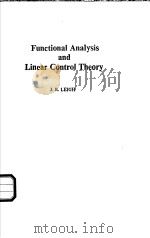《linear system theory and design P662》
| 作者 | 编者 |
|---|---|
| 出版 | 未查询到或未知 |
| 参考页数 | |
| 出版时间 | 没有确切时间的资料 目录预览 |
| ISBN号 | 无 — 求助条款 |
| PDF编号 | 820549228(仅供预览,未存储实际文件) |
| 求助格式 | 扫描PDF(若分多册发行,每次仅能受理1册) |
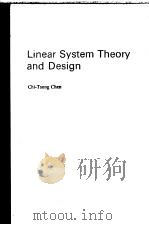
Chapter 1Introduction1
1-1 The Study of Systems1
1-2 The Scope of the Book2
Chapter 2Linear Spaces and Linear Operators6
2-1 Introduction6
2-2 Linear Spaces over a Field7
2-3Linear Independence, Bases, and Representations12
Change of Basis17
2-4 Linear Operators and Their Representations19
Matrix Representations of a Linear Operator21
2-5Systems of Linear Algebraic Equations26
2-6 Eigenvectors, Generalized Eigenvectors, and Jordan-Form Representations of a Linear Operator33
Derivation of a Jordan-Form Representation38
2-7Functions of a Square Matrix45
Polynomials of a Square Matrix45
Functions of a Square Matrix51
Functions of a Matrix Defined by Means of Power Series54
2-8 Norms and Inner Product57
2-9 Concluding Remarks60
Problems62
Chapter 3Mathematical Descriptlons of Systems70
3-1 Introduction70
3-2 The Input-Output Description72
Linearity73
Causality76
Relaxedness77
Time Invariance80
Transfer-Function Matrix81
3-3The State-Variable Description83
The Concept of State83
Dynamical Equations86
Linearity87
Time Invariance89
Transfer-Function Matrix90
Analog and Digital Computer Simulations of Linear Dyna-mical Equations91
3-4Examples94
Dynamical Equations for RLC Networks101
3-5 Comparisons of the Input-Output Description and the State-Variable Description106
3-6Mathematical Descriptions of Composite Systems108
Time-Varying Case108
Time-Invariant Case111
Well-Posedness Problem114
3-7 Discrete-Time Systems121
3-8Concluding Remarks124
Problems125
Chapter 4Linear Dynamical Equations and Impulse-Response Matrices133
4-1 Introduction133
4-2Solutions of a Dynamical Equation134
Time-Varying Case134
Solutions of x = A(t)x134
Solutions of the Dynamical Equation E139
Time-Invariant Case141
4-3Equivalent Dynamical Equations146
Time-Invariant Case146
Time-Varying Case151
Linear Time-Varying Dynamical Equation withPeriodic A(·)153
4-4 Impulse-Response Matrices and Dynamical Equations154
Time-Varying Case154
Time-Invariant Case157
4-5 Concluding Remarks161
Problems162
Chapter 5Controllability and Observability of Linear Dynamical Equatlons168
5-1 Introduction168
5-2 Linear Independence of Time Functions170
5-3Controllability of Linear Dynamical Equations175
Time-Varying Case175
Differential Controllability, Instantaneous Controllabil-ity, and Uniform Controllability180
Time-Invariant Case183
Controllability Indices187
5-4 Observability of Linear Dynamical Equations192
Time-Varying Case192
Differential Observability, Instantaneous Observabil-ity, and Uniform Observability196
Linear Time-Invariant Dynamical Equations197
Observability Indices198
5-5Canonical Decomposition of a Linear Time-Invariant Dyna-mical Equation199
Irreducible Dynamical Equations206
5-6 Controllability and Observability of Jordan-Form Dynamical Equations209
5-7 Output Controllability and Output Function Controllability214
5-8 Computational Problems217
5-9 Concluding Remarks226
Problems227
Chapter 6Irreducible Realizations, Strict System Equivalence, and Identification232
6-1 Introduction232
6-2 The Characteristic Polynomial and the Degree of a Proper Rational Matrix234
6-3Irreducible Realizations of Proper Rational Functions237
Irreducible Realization of β3/D(s)237
Irreducible Realizations of g(s) = N(s)/D(s)240
Observable Canonical-Form Realization240
Controllable Canonical-Form Realization243
Realization from the Hankel Matrix245
Jordan-Canonical-Form Realization249
Realization of Linear Time-Varying Differential Equations252
6-4 Realizations of Vector Proper Rational Transfer Functions253
Realization from the Hankel Matrix257
6-5Irreducible Realizations of Proper Rational Matrices: Hankel Methods265
Method Ⅰ.Singular Value Decomposition268
Method Ⅱ.Row Searching Method272
6-6 Irreducible Realizations of(s): Coprime Fraction Method276
Controllable-Form Realization276
Realization of N(s)D-1(s), Where D(s) and N(s) Are NotRight Coprime282
Column Degrees and Controllability Indices284
Observable-Form Realization285
6-7 Polynomial Matrix Description287
6-8 Strict System Equivalence292
6-9 Identification of Discrete-Time Systems from Noise-Free Data300
Persistently Exciting Input Sequences307
Nonzero Initial Conditions309
6-10 Concluding Remarks313
Problems317
Chapter 7State Feedback and State Estimators324
7-1 Introduction324
7-2 Canonical-Form Dynamical Equations325
Single-Variable Case325
Multivariable Case325
7-3State Feedback334
Single-Variable Case334
Stabilization339
Effect on the Numerator of g(s)339
Asymptotic Tracking Problem—Nonzero SetPoint340
Multivariable Case341
Method Ⅰ341
Method Ⅱ345
Method Ⅲ347
Nonuniqueness of Feedback Gain Matrix348
Assignment of Eigenvalues and Eigenvectors351
Effect on the Numerator Matrix of G(s)352
Computational Problems353
7-4 State Estimators354
Full-Dimensional State Estimator355
Method Ⅰ357
Method Ⅱ358
Reduced-Dimensional State Estimator361
Method Ⅰ361
Method Ⅱ363
7-5Connection of State Feedback and State Estimator365
Functional Estimators369
7-6 Decoupling by State Feedback371
7-7Concluding Remarks377
Problems378
Chapter 8 Stablllty of Llnear Systems384
8-1Introduction384
8-2Stability Criteria in Terms of the Input-Output Description385
Tine-Varying Case385
Time-Invariant Case388
8-3 Routh-Hurwitz Criterion395
8-4Stability of Linear Dynamical Equations400
Time-Varying Case400
Time-Invariant Case407
8-5 Lyapunov Theorem412
A Proof of the Routh-Hurwitz Criterion417
8-6 Discrete-Time Systems419
8-7 Concluding Remarks425
Problems425
Chapter 9Llnear Tlme-Invarlant Composlte Systems: Characterlza-tlon, Stablllty, and Deslgns432
9-1 Introduction432
9-2 Complete Characterization of Single-Variable Composite Systems434
9-3Controllability and Observability of Composite Systems439
Parallel Connection440
Tandem Connection441
Feedback Connection444
9-4 Stability of Feedback Systems448
Single-Variable Feedback System449
Multivariable Feedback System451
9-5Design of Compensators: Unity Feedback Systems458
Single-Variable Case458
Single-Input or Single-Output Case464
Multivariable Case—Arbitrary Pole Assignment468
Multivariable Case—Arbitrary Denominator-Matrix Assignment478
Decoupling486
9-6 Asymptotic Tracking and Disturbance Rejection488
Single-Variable Case488
Multivariable Case495
Static Decoupling—Robust and NonrobustDesigns501
State-Variable Approach504
9-7Design of Compensators: Input-Output FeedbackSytems506
Single-Variable Case506
Multivariable Case511
Implementations of Open-Loop Compensators517
Implementation Ⅰ517
Implementation Ⅱ519
Applications523
Decoupling523
Asymptotic Tracking, Disturbance Rejection, andDecoupling526
9-8Concluding Remarks534
Problems536
Appendix AElementary Transformations542
A-1 Gaussian Elimination543
A-2 Householder Transformation544
A-3 Row Searching Algorithm546
A-4 Hessenberg Form551
Problems553
Appendix BAnalytic Functions of a Real Variable554
Appendix CMinimum Energy Control556
Appendix DControllability after the Introduction of Sampling559
Problems564
Appendix EHermitian Forms and Singular Value Decomposition565
Problems570
Appendix FOn the Matrix Equation AM + MB = N572
Problems576
Appendix GPolynomials and Polynomial Matrices577
G-1 Coprimeness of Polynomials577
G-2 Reduction of Reducible Rational Functions584
G-3 Polynomial Matrices587
G-4 Coprimeness of Polynomial Matrices592
G-5 Column- and Row-Reduced Polynomial Matrices599
G-6 Coprime Fractions of Proper Rational Matrices605
Problems618
Appendix HPoles and Zeros623
Problems635
References636
Index657
《linear system theory and design P662》由于是年代较久的资料都绝版了,几乎不可能购买到实物。如果大家为了学习确实需要,可向博主求助其电子版PDF文件。对合法合规的求助,我会当即受理并将下载地址发送给你。
高度相关资料
-

- ORGANIZATION THEORY AND DESIGN
- 1983 WEST PUBLISHING COMPANY
-

- HOCHSPANNUNGS-ISOLATIONS-PRUFTECHNIK
- VEB VERLAG TECHNIK BERLIN
-

- CONTROLLED AND CONDITIONED INVARIANTS IN LINEAR SYSTEM THEORY
- 1992 PRENTICE HALL
-
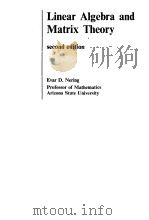
- LINEAR ALGEBRA AND MATRIX THEORY
- 1963 JOHN WILEY & SONS INC
-
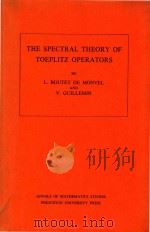
- The spectral theory of Toeplitz operators
- 1981 Princeton University Press : University of Tokyo Press
-
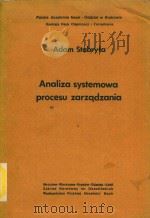
- Analiza systemowa procesu zarzadzania
- 1984 Zaklad Narodowy im.Ossolinskich
-

- FUNCTIONAL ANALYSIS AND LINEAR CONTROL THEORY
- 1980 ACADEMIC PR
-

- Linear control system analysis and designconventional and modern
- 1975 McGraw-Hill
-

- LINEAR SYSTEM FUNDAMENTALS
- 1983 MCGRAW-HILL BOOK COMPANY
-
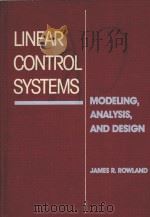
- LINEAR CONTROL SYSTEMS:MODELING ANALYSIS AND DESIGN
- 1986 JOHN WILEY & SONS
提示:百度云已更名为百度网盘(百度盘),天翼云盘、微盘下载地址……暂未提供。➥ PDF文字可复制化或转WORD

